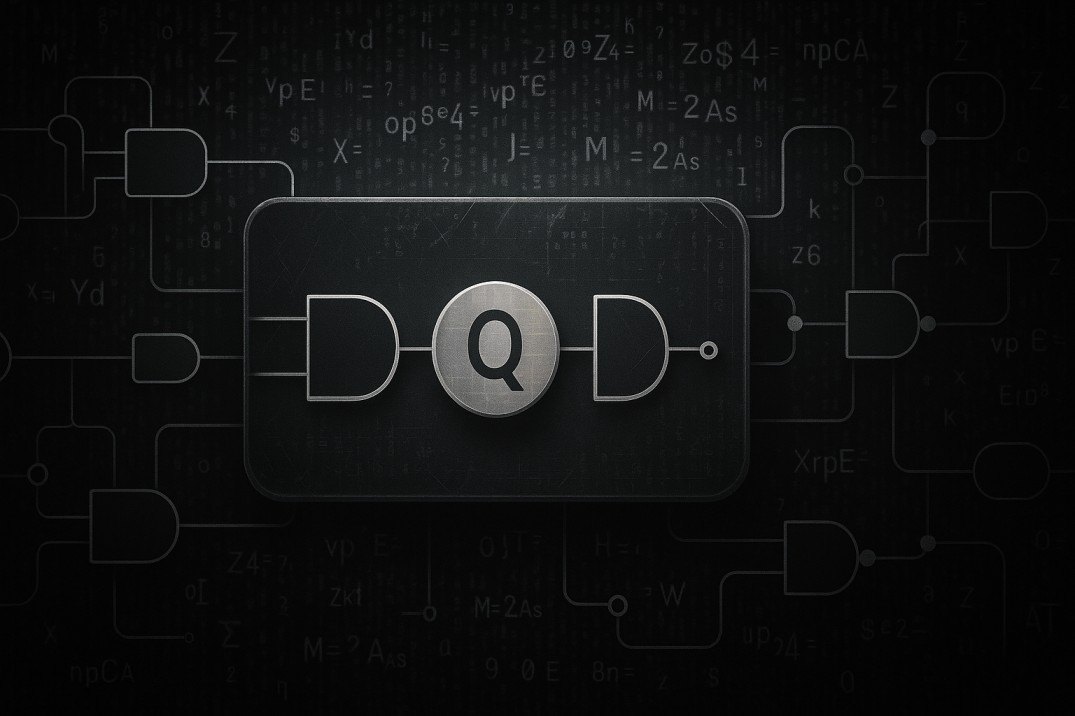TL;DR
- Garbled circuits (GCs) are a cryptographic technique that allows computation over encrypted data, enabling parties to jointly compute a function without revealing their private inputs.
- Originally a theoretical concept from Andrew Yao, GCs have been refined and optimized-yet until recently, they were too resource-intensive for blockchain use.
- COTI has integrated GC into its roadmap (in its V2 design) to bring confidential computing to public blockchains-balancing transparency with privacy.
- Benchmarks claim that COTI's GC implementation can run between 1,800× to 3,000× faster than leading fully homomorphic encryption (FHE) alternatives.
- In real-world terms, GCs allow DeCC (decentralized confidential computing) - smart contracts and blockchain logic that operate on private inputs while preserving auditability.
- The future of privacy in blockchain and Web3 might rest on GCs: scaling confidential logic in DeFi, enterprise data-sharing, CBDCs, AI, and more.
Blockchains were invented to be transparent, auditable ledgers. Every transaction is visible, every state change recorded publicly. That openness is part of their appeal-but it's also a barrier for real-world adoption. In many cases, users, enterprises, or institutions cannot expose financial data, identity links, or business logic publicly. Privacy must be layered atop transparency. Over the years, zero-knowledge proofs (ZKPs), multi-party computation (MPC), homomorphic encryption (HE), and trusted execution environments (TEEs) have all vied for attention.
Yet one of the more underappreciated gems is garbled circuits (GCs). Until recently, they were primarily academic curiosities. But improvements in efficiency, together with blockchain-native designs, are pushing GCs into the spotlight - especially for decentralized confidential computing (DeCC).
COTI, in particular, is betting heavily on GC. Its strategy is that GCs can deliver privacy in ways other techniques struggle to, combining performance, flexibility, and compatibility. In many ways, GC may be the backbone of the next generation of privacy-enabled blockchain systems.
What Is a Garbled Circuit?

At its heart, a garbled circuit is a way to let multiple parties compute a function on secret inputs without revealing those inputs to each other. Andrew Yao introduced the concept:
Here's how the basic process works (in simplified form):
1. Function → Boolean Circuit
You express whatever logic you want (e.g. sum two secret numbers, compare values, process conditions) as a circuit of logical gates (AND, OR, XOR, etc.).
2. Garbling / Encryption
One party (the garbler) encrypts (or "garbles") that circuit. They assign to each wire two garbled "labels" (one for 0, one for 1). They then encrypt each gate's truth table in a way that only with the correct input labels will the correct output label decrypt.
3. Input Label Transfer (Oblivious Transfer)
The other party (the evaluator) needs the correct labels for their inputs - but without revealing their input. This is done via Oblivious Transfer (OT).
4. Circuit Evaluation
The evaluator, with the correct labels, processes the garbled gates one by one - decrypting only the correct branch at each gate. They never see the actual input bits of the other side, nor intermediate values beyond labels.
5. Reveal Output
At the end, the evaluator holds a label for the output wire, which can then be mapped to the actual result of the function. Because the logic and data remain encrypted throughout, the parties compute correctly without revealing private data or intermediate values. This is the power of GCs.
GCs can be extended to multi-party setups and optimized in various ways.
Why GCs Matter - Especially Now
You might wonder: Aren't zero-knowledge proofs (ZKPs) or FHE enough? GCs offer a unique sweet spot:
General-purpose computation: Unlike many ZKPs, which are often optimized for proving a result, GCs can compute any function in a privacy-preserving way (so long as it's expressed as a circuit).
Performance edge vs FHE: Fully homomorphic encryption allows operations on ciphertexts directly, but it's notoriously slow and resource-intensive. COTI's benchmarking shows GCs running 1,800× to 3,000× faster than top FHE approaches.
Lower complexity for certain private state operations: Some computations require shared private mutable state between parties. GCs handle such patterns more naturally than many ZK-based systems.
Industry traction in Web3 / DeCC: GCs are emerging as a core privacy tool for blockchains. In a recent write-up, a privacy tech firm called Soda Labs points out that GCs are enabling encrypted smart contracts (gcVM, gcEVM) - contracts that operate on encrypted variables.
Compatibility / simplicity: GCs can be constructed with standard cryptographic primitives (e.g. AES) instead of exotic math, which helps with auditability, tooling, and adoption.
In short: GCs strike a combination of privacy, performance, and flexibility. That's rare.
COTI & Garbled Circuits: Privacy with Practicality

COTI has taken GCs from theory to real-world architecture. Its V2 design integrates GC as a core confidentiality mechanism.
Confidential Transactions & DeCC
COTI envisions decentralized confidential computing (DeCC) as a primary use case: smart contracts, token logic, confidential state transitions - all running in a privacy-preserving way. GCs make this possible.
COTI claims that garbled circuits allow them to run confidential transactions lightweightly - revealing nothing to external observers, yet auditable by authorized parties.
Performance & Benchmarks
COTI's team published benchmark results comparing GC to FHE. They showed that on basic arithmetic (addition, multiplication) GCs using their implementation were orders of magnitude faster - turning expensive FHE operations into microsecond-level GC steps.
One striking metaphor they used: the speed gain is akin to reducing a 22-hour flight to a few minutes. They also claim latency improvements up to 100× over other privacy-preserving smart contract technologies in some configurations.
Real Throughput & Use Case Metrics
Messari's recent confidential computing report highlights that COTI currently supports 50-80 confidential ERC20 transactions per second - an initial DeCC throughput benchmark. Given this baseline and future optimizations, COTI positions itself as one of the leading GC-powered blockchains in terms of privacy + throughput.
Strategic Positioning
COTI doesn't present GC as a gimmick - it uses GC to enable real-world value propositions:
- Enterprise privacy: Businesses can run logic involving private inputs (e.g. pricing, identity, trade matching) without exposing their data.
- Regulated privacy: With GC, you can have confidentiality and conditional auditability (censoring, compliance).
- CBDCs and privacy rails: In central bank digital currency pilots, COTI's GC enables "conditional payments" (verifying provenance or compliance without revealing all data) - a vital balancing act between privacy and regulation.
In other words, COTI is using garbled circuits not as a novelty, but as the backbone of its privacy-first future.
Use Cases & Potential Across Industries
Because GCs allow private computation, many fields could benefit:
- 1. Confidential DeFi / Finance
Private order matching
Private position management
Confidential lending / credit scoring - 2. Enterprise shared computation
Cross-organization data collaboration (e.g. supply chain, health data)
Joint analytics on sensitive data without revealing raw inputs - 3. Regulated Privacy & Identity
Identity proofs where you prove a property without revealing all identity data
Compliant privacy in governance or voting
4. CBDC Infrastructure
As in COTI's case: privacy-preserving, auditable transactions in digital currency systems
5. AI / Machine Learning on Encrypted Data
Neural network inference or collaborative training where inputs or parameters remain encrypted. The "Dash" paper iterates use of garbled circuits for distributed CNN inference.
6. Confidential Smart Contracts / Encrypted Variables
Private variables in contracts that can be processed without revealing them (gcVM / gcEVM ideas)
GCs may not be universal magic, but they offer a powerful tool in the privacy engineer's toolkit - especially where other methods fall short.
ALSO READ: COTI V2 Use Cases: Setting a New Benchmark for Blockchain Privacy
Why You Should Watch Garbled Circuits (Especially in Crypto)
1. Foundational for Web3 Privacy
If blockchains are going to process confidential logic (beyond simple token transfers), GC is one of the few techniques that scales well enough to be credible.
2. Better trade-off than extremes
Compared to FHE (too slow) or simple TEEs (trusted hardware), GC blends performance and privacy in a flexible way.
3. Bridge for institutional adoption
Businesses, banks, regulators will demand privacy + accountability. GC provides a way in-COTI's incorporation is a proof point.
4. Enables DeCC, DeFi, enterprise logic
With private computation, DeFi contracts can embed more logic, enterprises can share data, and cross-chain bridges can handle private data flows.
5. Untapped innovation space
Many GC-driven primitives are yet unexplored: private game logic, agent privacy, simulation confidentiality, AI models on encrypted inputs, and hybrids.
In short, garbled circuits may quietly become one of the most pivotal technologies in Web3's shift toward confidential, composable, usable systems.
Final Thought
When we look back in 5 years, the privacy layers of blockchain may be powered not by flashy zero-knowledge proofs alone, but by the unassuming, powerful force of garbled circuits. What once was theoretical may become the hidden engine of private computation across DeFi, enterprise, CBDCs, AI, and beyond.
With COTI weaving GC into its protocol design today, it's laying the groundwork for a new architecture. GCs may well be the unsung hero of the post-transparent Web3 era, quietly unlocking confidentiality without destroying blockchain's promise.
ALSO READ: What If Google Ran on Garbled Circuits?











